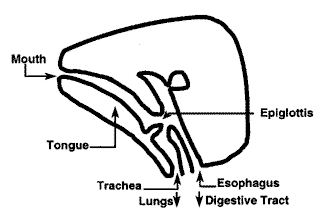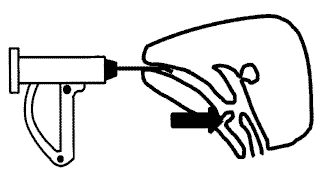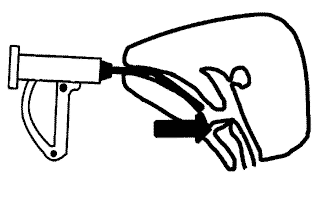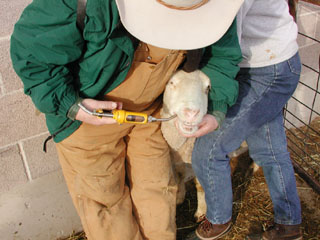
| This diagram shows the internal anatomy of the mouth and throat (pharynx) regions of the head. Note the epiglottis and the openings to the lungs and stomach. |
Introduction:
Drenching is a procedure where fluids or pastes are discharged into the mouth. Some basic recommendations include keeping excitement and stress on the animal to a minimum, not rushing the job, holding the animalís head level at all times, and keeping drenching nozzles and tips smooth to prevent abrasions and lacerations in the mouth. When drenching or administering any liquid into the mouth of an animal, it is essential that the liquid be administered into the esophagus and not into the lungs. The following suggestions will help make sure this happens when using different drenching guns.
 |
|
Gun with Short Spout - Epiglottis Open
 |
|
Gun with Long Spout - Epiglottis Closed
 |
|
|
|
||
|
 |
|
|
If the video
does not play, you must install an MPEG video |